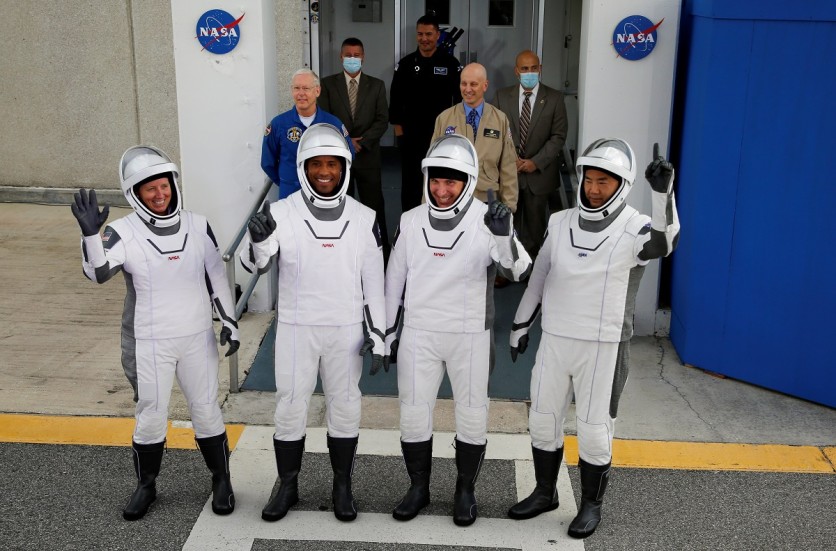SpaceX launched with four astronauts aboard the Falcon 9 rocket starts a new era of for the space agency.
Three NASA astronauts Victor Glover, Shannon Walker, and Mike Hopkins as well as Japanese space agency JAXA astronaut Soichi Noguchi began their 27.5-hour trip to the International Space station (ISS) on Sunday, November 16, from the Kennedy Space Center in Florida.

NASA and SpaceX have overcome certain delays as the rocket's nine engines roared amid risky weather at 7:27 p.m. ET. The Falcon 9 illuminated the night sky as it went over the Atlantic Ocean. The spacecraft will have a trip in orbit before it docks in the ISS where astronauts will begin a six-month stay.
SpaceX commercial space transport
NASA's recent launch was Crew Dragon's first operational flight. Elon Musk's space company SpaceX built and operated the 229-foot-tall Falcon 9 rocket which carried four astronauts to ISS.
NASA director of commercial spaceflight development Phil McAlister noted that it was the first time in the space agency's history that a private company was able to safely transport humans to space.

"It marks the end of the development phase of the system," McAlister told New York Times in an interview on Thursday, November 12.
Last week, NASA and SpaceX have completed the certification process with the space agency giving Musk's company with its seal of approval. This means SpaceX has met all necessary specifications and qualifications set to regularly carry NASA astronauts space.
This launch is also called as Crew-1 will regularly take a scheduled trip to take four astronauts to the ISS where they will stay for six months.
Read also : NASA and SpaceX's Crew-1 Dragon Launch: Last-Minute Sunday Resched Due to Horrible Ocean Conditions!
"One heck of a ride"
The mission's commander Colonel Hopkins thanked SpaceX staff who made the launch possible. It noted the Earth's beauty that the crew will see as they go in orbit.
"That was one heck of a ride," Hopkins said an hour after the launch as noted by Washington Post. He added that the four astronauts were all smiles on their way to the orbit.
NASA livestreamed the event showing the crew in good spirits as they suit up their modern SpaceX flight suits. Numerous facemask-wearing SpaceX technicians assisted the astronauts who took photos with visitors, including NASA administrator Jim Bridenstine and SpaceX President and COO Gwynne Shotwell.
Instead of relying on government-operated spacecraft, NASA astronauts and all those who can afford can buy a ticket aboard a commercial rocket in the future.
About 4 p.m. ET, the four astronauts said goodbye to their families and began a Tesla cars with license plates ride L8RERTH to the launchpad. This is NASA's first Crew Dragon "operational" flight after a successful demo mission in May.
NASA astronauts Douglas Hurley and Robert Behnken got off in a capsule called Endeavour. It was the first time a crewed mission was launched from U.S. soil since 2011 when NASA retired its space shuttles. The mission landed back on Earth on water, which was also the first. Since 1970s, the US space agency relies on Russian Soyuz rockets to bring its astronauts to the ISS, which has now become increasingly costly with over $90 million a seat while it costs $57 million SpaceX to launch a rocket.
Related article : Japanese Man Makes Third Trip to ISS on Three Different Spacecrafts: How to Watch SpaceX Crew Dragon Launch Live
This is owned by Tech Times
Written by CJ Robles
ⓒ 2025 TECHTIMES.com All rights reserved. Do not reproduce without permission.




